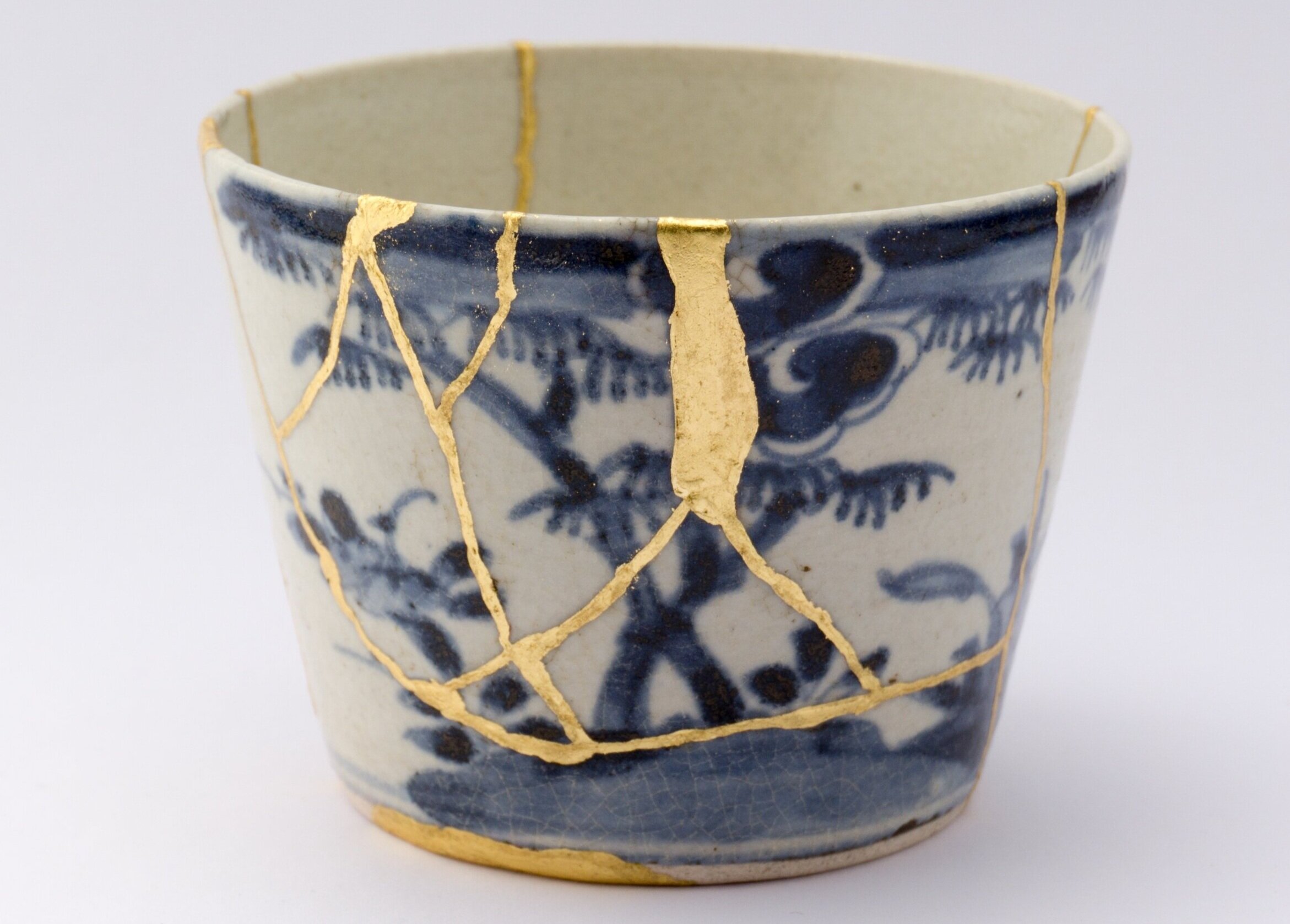A beloved cup or bowl — perhaps a family heirloom — slips from our grasp and falls to the floor, shattering into pieces. A serious illness or injury rends our bodies and spirit. A pandemic forces businesses to furlough and lay-off employees — or close altogether. A nation in turmoil tears at the foundation that makes civil society possible.
Shutterstock
How do we heal these wounds? Should we expect, or even hope, for a return to what was? No. Just as a shattered bowl can never be fully mended — our bodies, our businesses, and our society can never be exactly what they were.
This impossibility of return should be cause for despair. But, paradoxically, it is a good thing that we can’t go back — and the ancient Japanese art of repairing broken pottery, kintsugi, shows us why.
Kintsugi means to “join with gold.” A technique dating back to the 15th century, kintsugi — also called kintsukuroi — employs painted lacquer to glue broken pieces together, covering the lacquer with powdered metal (usually gold, and more recently, silver and platinum) to make the seams prominent.
A vase, bowl, or cup repaired this way doesn’t hide its flaws. Glowing ribbons arc and meander across its sides. A chip is filled in and shines like a gold tooth in a smile. The end of a missing spout attracts attention with its luster. Kintsugi objects are transformed by their repaired and gleaming cracks into new pieces of art. Even the most conservative shape is given a wildness and unpredictability that pulses with new life.
Kintsugi inspires deep affection, even reverence. Just like a person who refuses to apologize for their scars, objects repaired this way are beloved precisely because they don’t hide their transformation. Contrary to popular belief, there is not always a reason for everything. Unfortunate events happen to people through no fault of their own. The beauty of kintsugi is that it accepts randomness and the inevitability of things, even precious ones, to break.
Shutterstock
The pandemic that struck this past winter shattered our collective vessel. The breaks happened fast and were painful to see and to experience. But just six months later the first hints of gold are coming into view.
Organizations are discovering more flexibility in remote working. Supply chains are being strengthened and made more resilient. Business continuity plans have been tested and refined, or even put in place for the first time.
In hospitals on the front lines of this crisis, new predictive models ensure adequate supplies and staff during epidemic-related surges. The success of interdisciplinary teams, often improvised during the first terror-filled days and weeks of this crisis, is prompting a re-evaluation of traditional care silos. And telehealth — long anticipated — is transforming the doctor/patient relationship across medical specialties.
The performing arts, with the cancellation of almost all in-person events, have been hit especially hard during this pandemic. But nimble and resourceful organizations are eagerly exploring the virtual space. They’re finding an unexpected intimacy online, new ways to connect performer and audience, and opportunities to spread their art and message around the world.
What patterns of gold will trace the fractures in our civil society? It’s too soon to tell. The damage is still spreading, even as we gather up the pieces. But, as in so many other areas, people are coming together to bind up their collective wounds. From creative solutions for keeping food pantries stocked to neighborhood groups volunteering to pick up trash where sanitation budgets have been cut, there is hope that efforts to repair what has broken will ultimately lead to something even better.
Shutterstock
“When life gives you lemons, make lemonade,” goes the well-known saying. Sometimes, however, a bitter reality cannot just be sweetened and drank away.
Kintsugi sees this clearly. It acknowledges that while our breaks may be permanent, we should never be diminished by the scars that form. By covering them in gold that never fades, they become part of our history — a source of wisdom and a reminder of our strength.
--
Published here on Forbes.com
September 9, 2020




